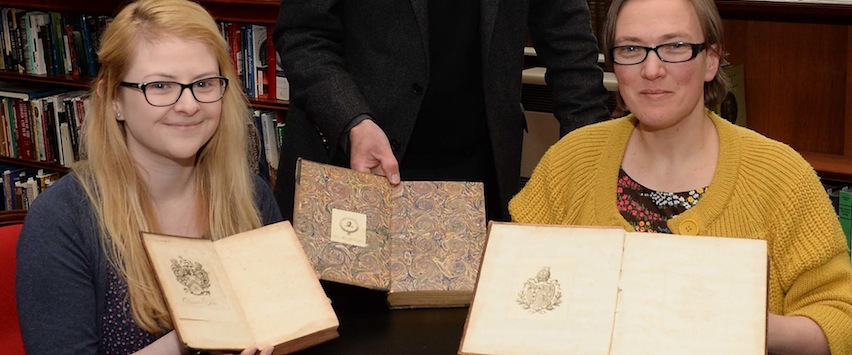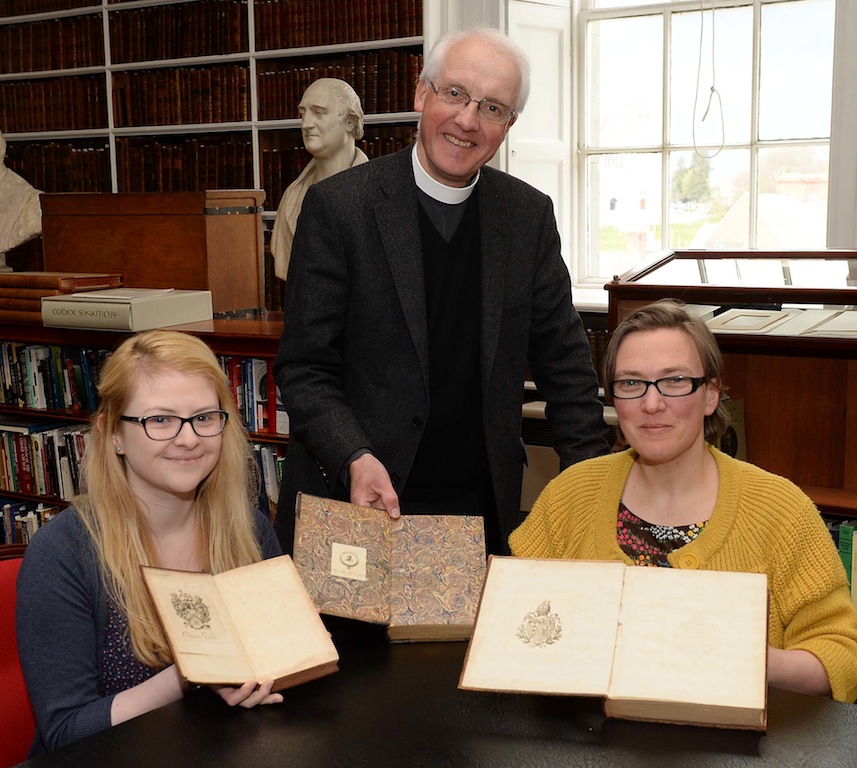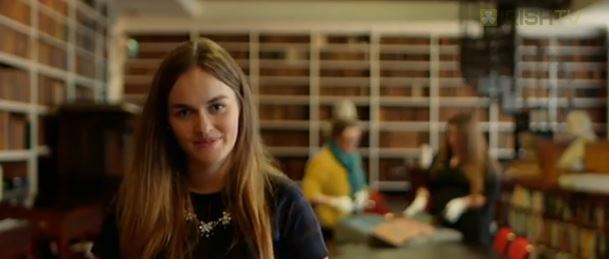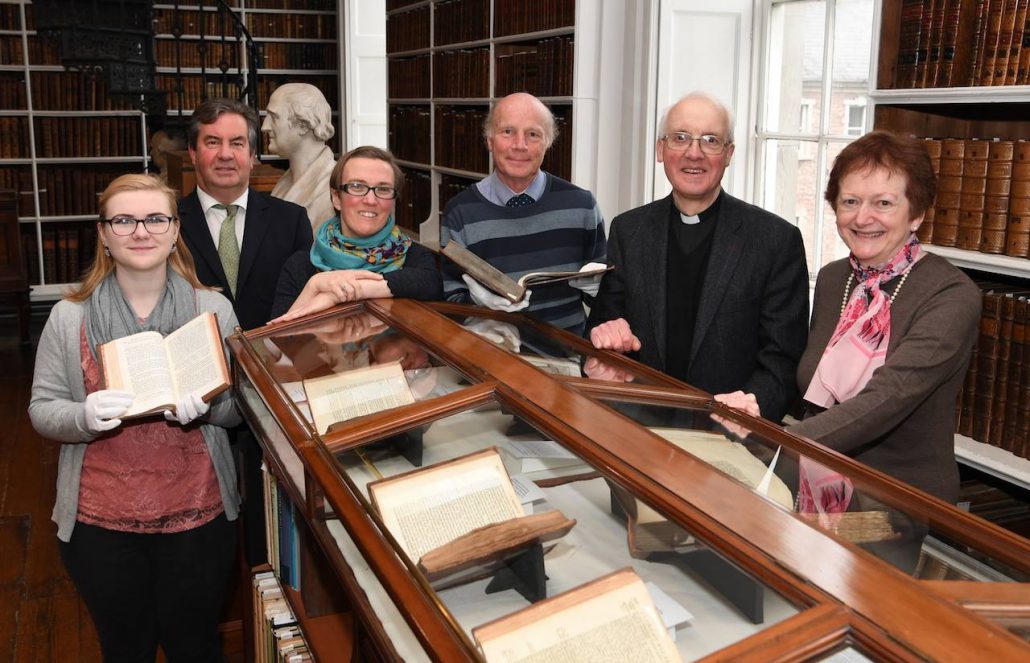

In the days when wealthy people collected books, they put bookplates, printed labels, inside the front cover to mark their ownership. Armagh Public Library has many examples, and has launched a new exhibition to display some of them. Founded in 1771, Armagh Public Library acquired books from many different collections, some of which may be traced to the early eighteenth-century.
One example of the bookplates on display is that of the Library’s founder, Archbishop Richard Robinson. This carries his family’s coat of arms, linked with those of the Archbishop of Armagh surmounted with an impressive mitre crest. Other bookplates include those of Archbishop Marcus Gervais Beresford and of Thomas Romney Robinson, the nineteenth-century astronomer at Armagh Observatory.
Originating in Germany in the fifteenth century, bookplates became popular in Ireland from the eighteenth-century. A unique decorative plate or stamp was inserted into the inside cover of a book to show that it was part of a person’s collection. Usually this comprised an ornate composition of a family’s crest and coat of arms, and often included other motifs and mottos unique to the owner’s occupation or interests. For bookplates without an accompanying signature, such symbolism was designed to be specific enough to identify the owner.
In more recent times, bookplates have become an area of study for those interested in the history of books, art and the families that owned them. They show clearly how the artistry involved developed, and how they became more elaborate and unique to the owner as the practice became more popular.
The exhibition has been produced by the Library’s Archivist, Thirza Mulder, and Shannon Devlin, an MA intern from Queen’s University, Belfast. Keeper of the Library, the Very Revd Gregory Dunstan, said, “Books, once published, acquire a history of their own, of those who owned them, read them, and made notes in them. Bookplates record the acquisition of great libraries in good times, and the sale and dispersal of those libraries as family fortunes waned. They are a personal and tangible link with previous generations of scholars and lovers of learning.”



![Launch of the exhibition Of All the Pleasures in the World, Travell is [...] the Sweetest and Most Delightfull : Travel Literature in Armagh Robinson Library](https://armaghrobinsonlibrary.co.uk/wp-content/uploads/2017/07/Travel-exhibition-1-1280x832-scaled.jpg)